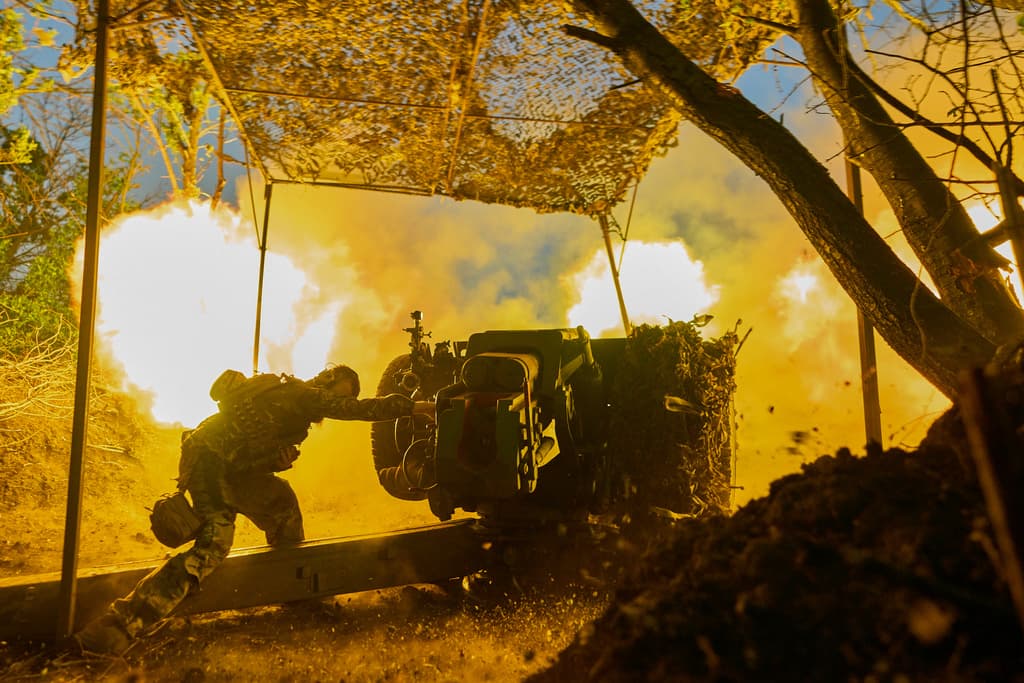Forests are burning, oil installations are being blown up, and massive amounts of steel and concrete are reinforcing hundreds of miles of front lines. Russia's war in Ukraine is causing emissions equivalent to 90 million petrol cars per year, according to a new report.
Military vehicles are spewing out dirty exhaust fumes, forests are ablaze, and front lines are being secured with climate villains steel and cement. Attacks on fuel depots lead to extra emissions when they start burning, although not on the same scale as the methane that leaked out following the sabotage of the Nord Stream gas pipeline. Furthermore, Russia's full-scale invasion of Ukraine has forced flights to take detours and millions of people to leave their homes.
In total, the first two years of Russia's invasion war generated around 175 million tonnes of CO2 equivalent emissions, according to a report from the Initiative on GHG Accounting of War (IGGAW), which is partly financed by the Swedish government.
The climate footprint of the war and Russian aggression is extensive, says lead author Lennard de Klerk to TT.
It corresponds to approximately the annual emissions of an industrialised country like the Netherlands or 90 million petrol cars. Russia is harming Ukraine but also our global climate.
Many sources
The calculations are based on satellite data, government information, scientific studies, and interviews with experts. And it's not just direct combat actions that are included, but the war's consequences in a broader sense.
Roughly, less than a third of the emissions come from military activities, particularly the Russian and Ukrainian forces' use of climate-damaging fossil fuels. Approximately the same proportion is attributed to the enormous amounts of steel and concrete needed now and especially in the future to rebuild a Ukraine that lies partly in ruins.
Another consequence was that when Russia closed the airspace over Siberia, flight times between Europe and Asia increased, sometimes by as much as 30 per cent. Longer flight times require more fuel, says Lennard de Klerk.
It shows that the climate footprint is not limited to Ukraine and the war, but that it also affects emissions in other parts of the world.
Lifting the fog
The hope is that the report can be a piece of the puzzle in efforts to hold Russia economically accountable for the war.
It "helps to lift the war fog that also exists when it comes to the environmental costs of the conflict", says Ukraine's Environment Minister Ruslan Strilets in a comment.
56 million tonnes of CO2 equivalent are attributed to the reconstruction of Ukraine that has already taken place and will be required when the war is over, with a lot of steel and concrete.
51.6 million tonnes of CO2 equivalent are attributed to military activity, such as the Russian and Ukrainian forces' use of fossil fuels, ammunition, fortifications, and equipment transport.
24 million tonnes of CO2 equivalent are linked to changed flight routes due to closed or restricted airspace.
22.9 million tonnes of CO2 equivalent are attributed to the forest and land fires that have increased due to the war.
17.2 million tonnes of CO2 equivalent are attributed to attacks on energy infrastructure, such as gas pipelines and oil depots.
3.3 million tonnes of CO2 equivalent are linked to people's flight.
Source: Initiative on GHG Accounting of War





